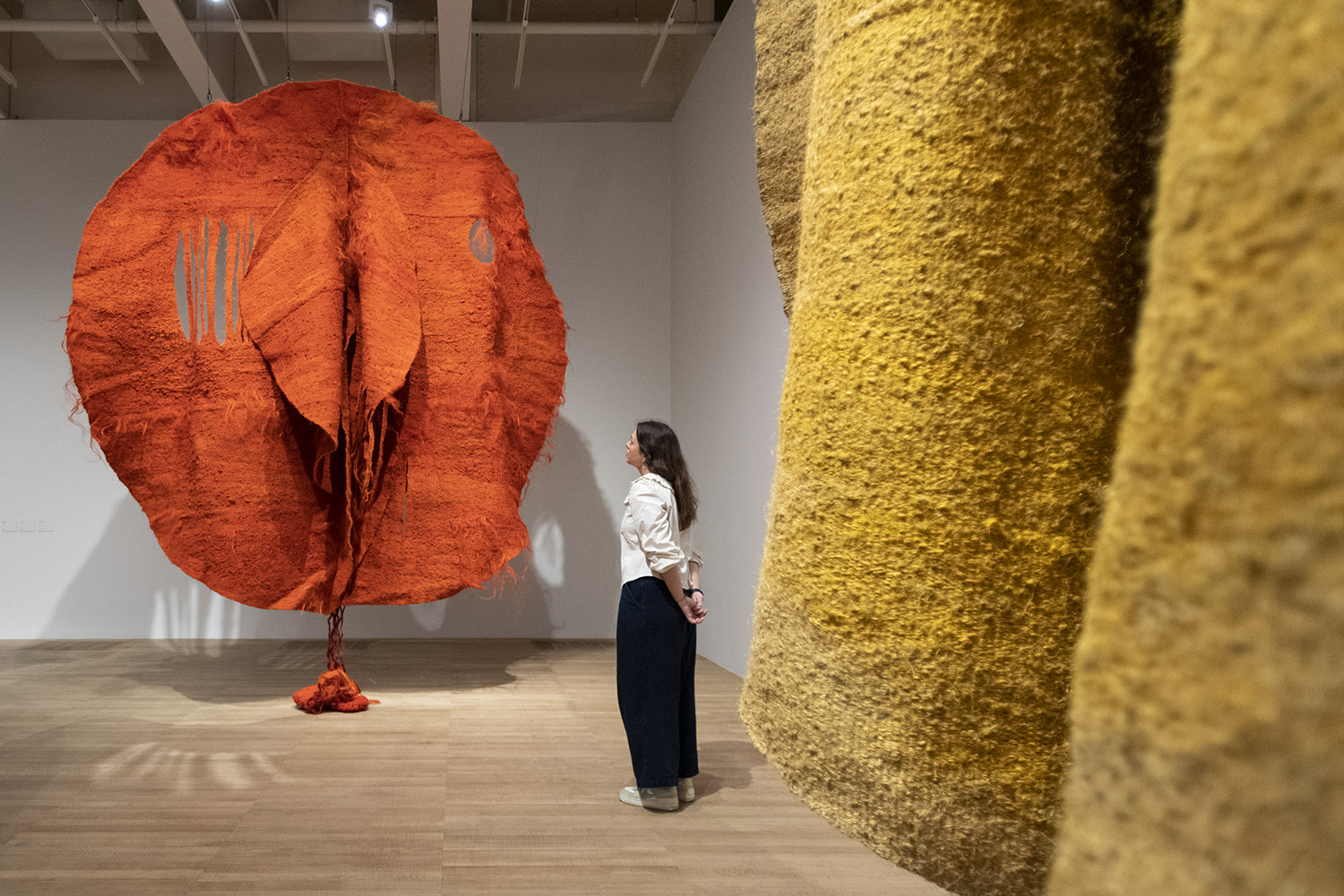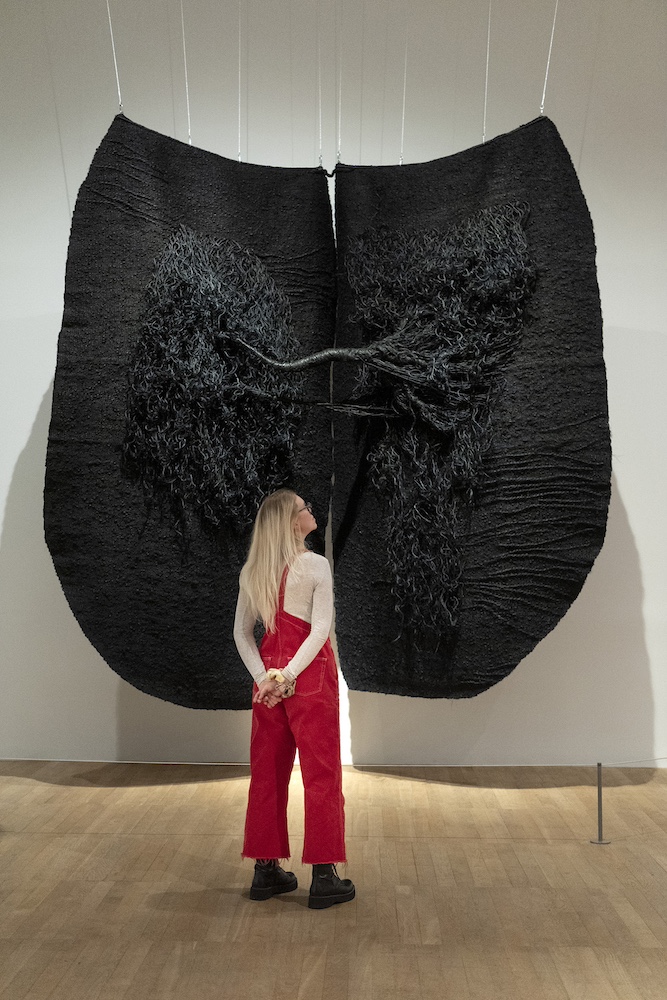See
Magdalena Abakanowicz at Tate Modern: fibre as her language

A leader of the New Tapestry movement in the 1960s, Abakanowicz claimed and validated fibre as medium for creating art. Fibre was the language in which she expressed herself, which resulted in her becoming the most well-known Polish artist of the twentieth century.
Every Tangle of Thread and Rope (until 21st May 2023) culminates in a forest of textile sculptures that awaits you in the 64-metre long gallery space of the Blavatnik Building at Tate Modern. Almost like living creatures their presence beguiles the visitor into feeling that you are not quite alone. Defying all other categorisation, known as the Abakans – taken from her surname – these towering sculptures are suspended from the ceiling by rope, that so softly and subtly move in the warmth of the air. Colours are intense, from intensely black but on longer lingering view to shades of burgundy and red, to other pieces in changing tones of ochre yellows, and to startling bright blood red. There is a primal draw to these fibrous beings with their cocoon-like shapes that you can walk around and into and be enveloped by.

At the time, critics were confounded, not quite sure what to make of this tangle and weave of natural fibres from horsehair, to wool and plant fibres. It wasn’t art as they knew it, but a completely new type of weaving, not traditionally structured on the loom with a warp and a weft, but formed by the artist’s own hands, enabling her to make rounded shapes and environments. These ‘spaces to experience’ were ground-breaking, as at that time, immersive art did not exist.
Abakanowicz grew up in an aristocratic family, spending much time in a large country house in Poland, playing in the surrounding forests, which set her love for and connection to the natural world. In her childhood, she experienced the traumas of the Germans invading Poland during the war, which in turn negatively affected the circumstances of the family over the course of the conflict. She later lived under the Communist regime in Poland.

The artist originally trained in painting with weaving as an option at the Academy of Fine Arts in Warsaw. After graduation she found that she wanted to express concepts, energy and emotion in textiles, not as something functional in the home. Fibre became her sculptural medium.
‘Art is state of being. You are born with the capacity to integrate your energy into objects. To create objects that never existed before. They can enlarge the knowledge of man about his planet and his environment, about his problems.’ Magdalena Abakanowicz
Her sculptures made her feel safe. She felt man’s relationship to the land and the environment through her encounter with fibre.

Magdalena Abakanowicz, Every Tangle of Thread and Rope at Tate Modern, London until 21st May 2023.
Exhibition organised by Tate Modern in collaboration with the Fondation Toms Pauli at the Musée Cantonal des Beaux-Arts de Lausanne/Plateforme 10 and Henie Onstad Art Centre, Høvikodden. With generous thanks to the Fundacja Marty Magdaleny Abakanowicz Kosmowskiej i Jana Kosmowskiego.
Marta Magdalena Abakanowicz-Kosmowska (20 June 1930 – 20 April 2017)

